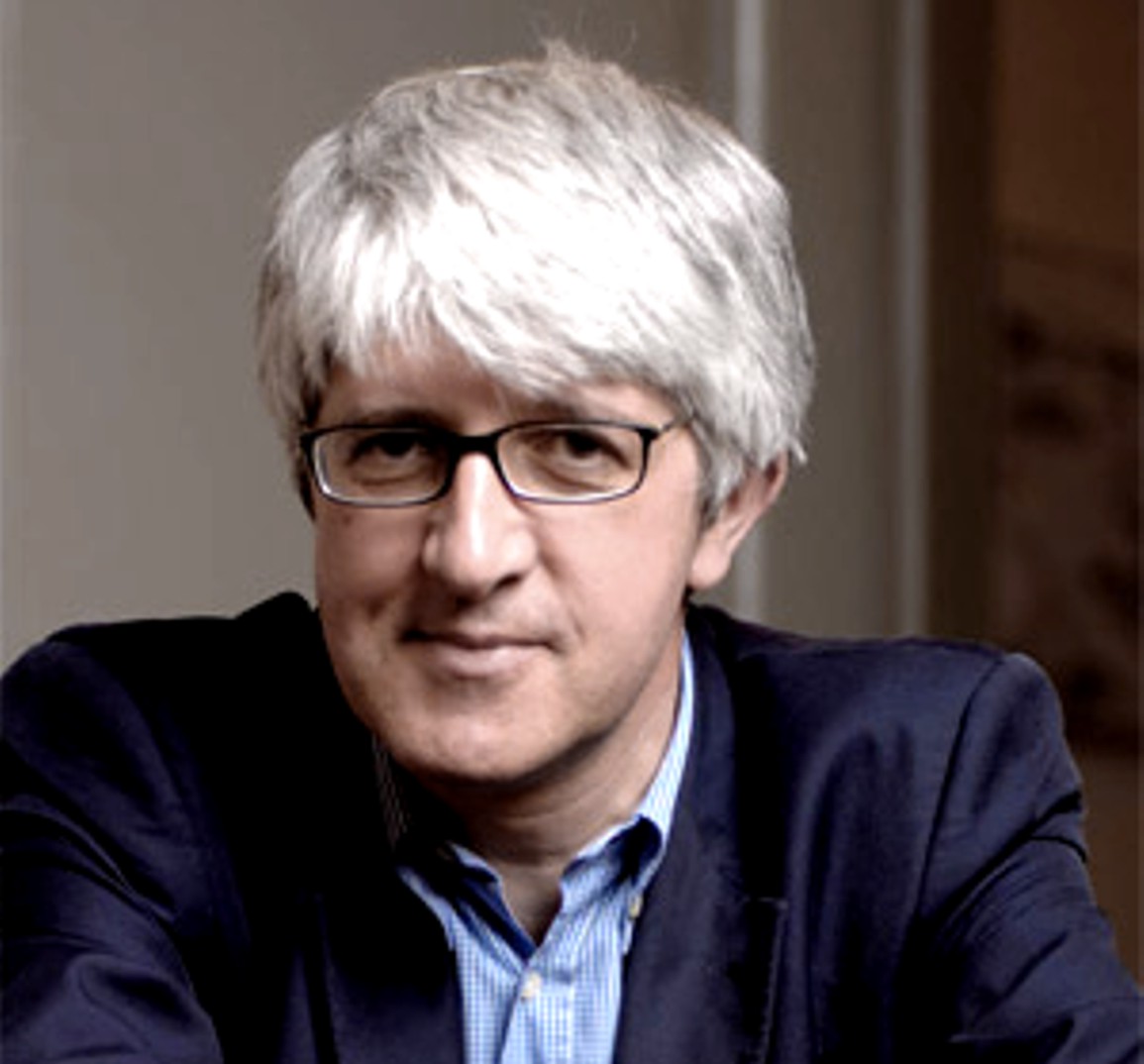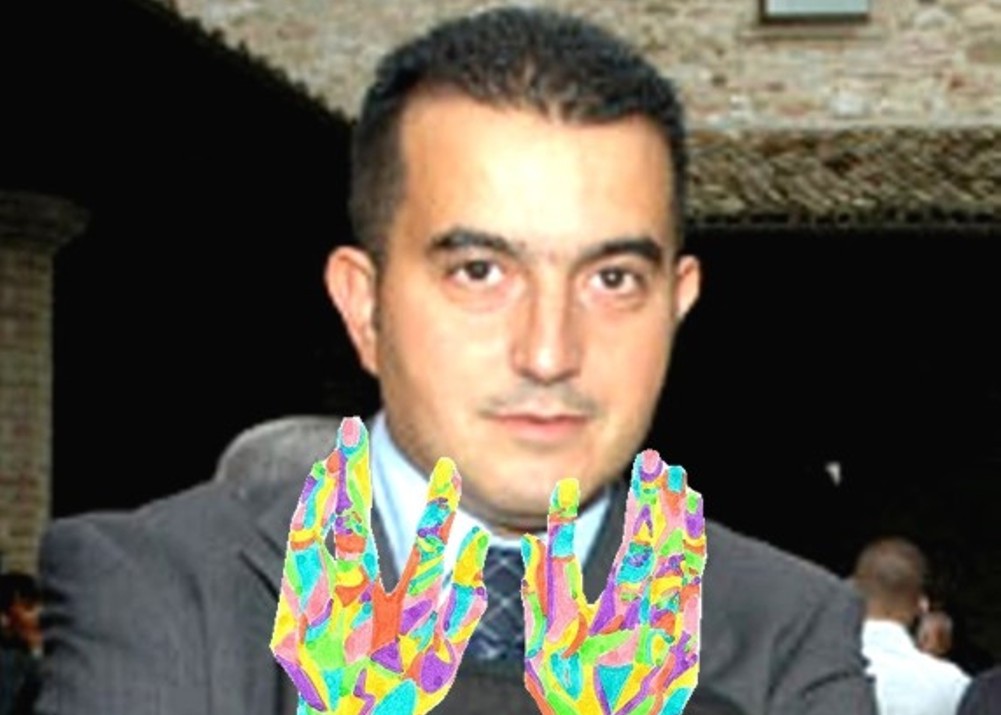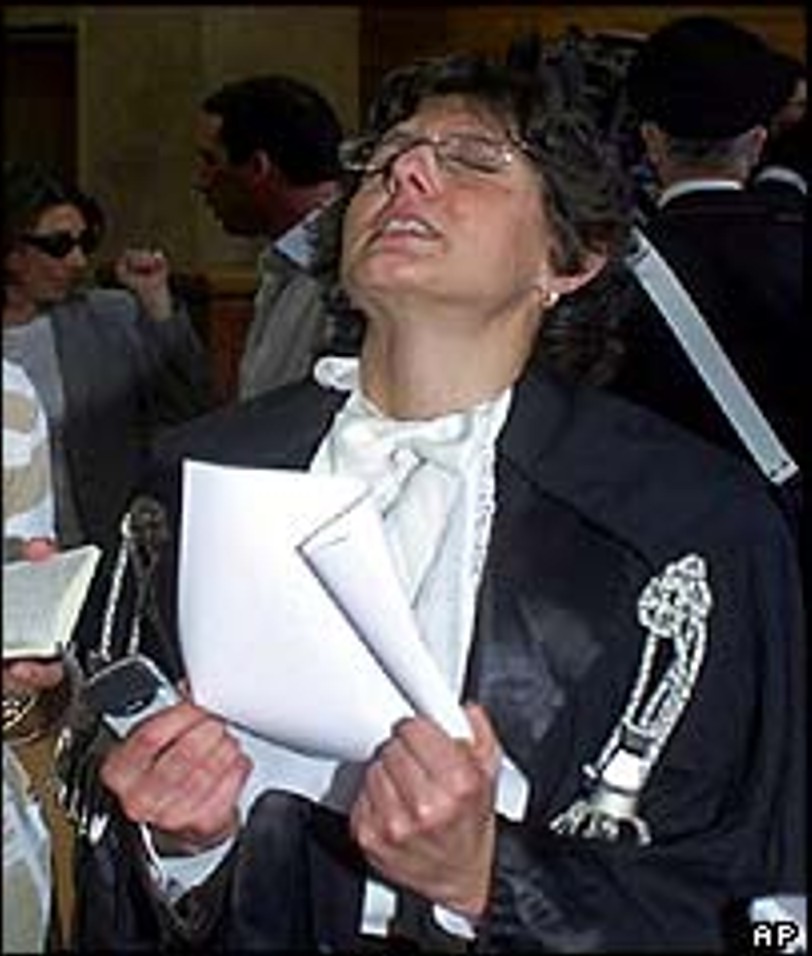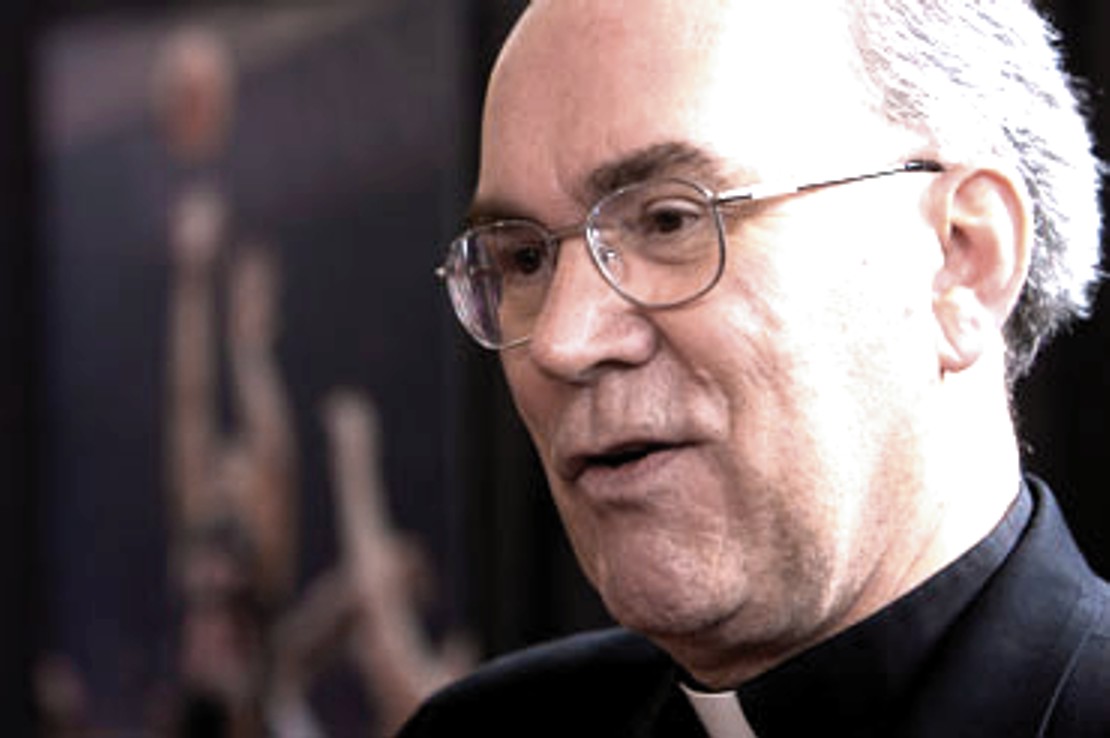
Category: Heavey, Bremner
Sunday, November 03, 2013
Knox Apologists Attempt To Bend Congress; But Nobody Important Turns Up
Posted by Our Main Posters
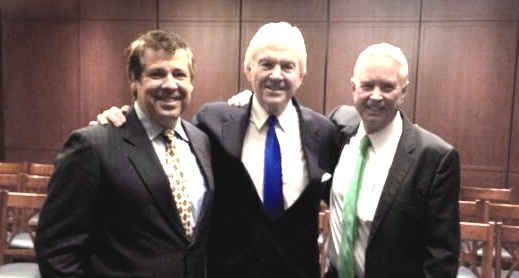
From the left: Steve Moore, John Douglas, and Michael Heavey.
In a room for hire at the Congress they made presentations of their misleading takes on the case to a near-empty room.
Senator Cantwell was apparently there briefly but took off as soon as she could. No other elected leaders were seen to be there.
There was seemingly no media coverage except for a sole post by another Knox apologist on the Infamous Ground Report.
These are hardly the most impartial or for that matter truthful and accurate observers of the case.
Click through for our numerous takedowns of the hapless Steve Moore, and John Douglas, and Michael Heavey.
Monday, October 28, 2013
Some Hard Truths Sollecito PR Puppet Sharlene Martin Omits In Her Misleading Invite To The Congress
Posted by Our Main Posters
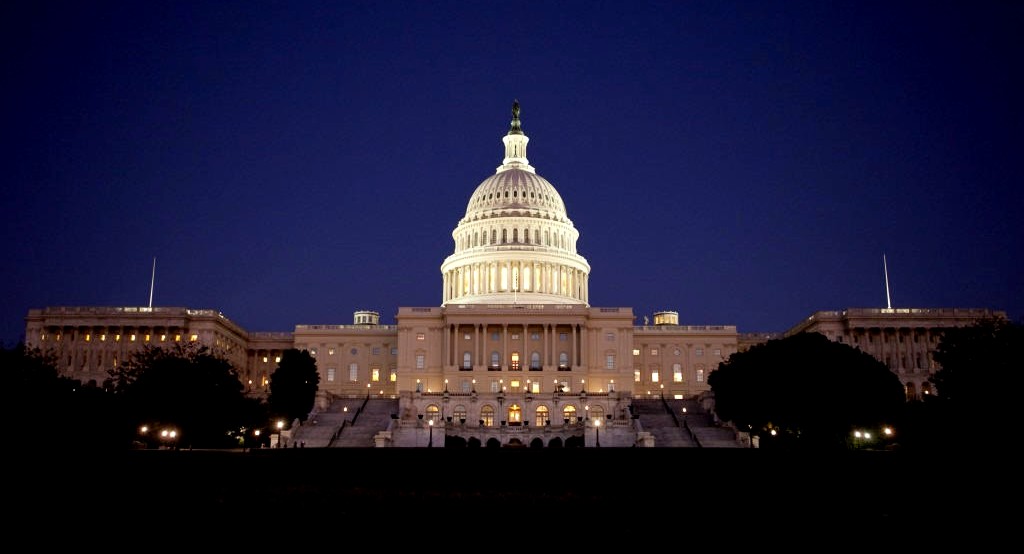
Dear Sharlene Martin:
Please dont say we didnt warn you before. In this notice of a Congressional “briefing” (read: paid highly misleading PR) you once again gloss over a number of hard truths.
You might well be advised to head to higher ground. The US Congress and the Administration will soon be left in no doubt about the correct facts of the case against Sollecito and Knox, as Italian law enforcement start to reach out to their counterparts in the FBI, and as they charge mischief-makers with obstruction of justice in the case, and as more and more reporters in the US and UK media wisen up.
Against your client, this was always a very strong case. And this alone has your client cooked. Here are some other corrections and correct background to the false claims you have just made.
- 1) Senator Cantwell was already burned by associating too closely with your radioactive group. She spoke out daffily for Amanda Knox several years ago - and then, duly warned, she went quiet again. Ask her congressional staff for the story to that. And read our past heads-ups for Senator Maria Cantwell here and here.
2) Your client Raffaele Sollecito wrote the most defamatory and misleading book about an Italian case in many years. Key claims have been repudiated by his own father on Italian TV. As his case is ongoing Sollecito is meant to fight it in the (very fair) Italian courts, not poison public opinion to lean on those courts. Sollecito is being considered for charges of obstruction of justice for the book and much else in the media, and you and the publishers may be charged too.
3) This is NOT a third trial. It is a re-run of a first appeal. If the very well-run and highly decisive Massei trial of 2009 had been run in the US or UK it is hard to see what grounds if any, any appeal judge would accept for appeal. Your client would be near the end of his sixth year in prison. And it is known that the Hellmann Appeal and the DNA consultancy were both bent by Sollecito’s and Knox’s own teams (corrective measures have been taken with more to come) so the 6-year process is essentially your own team’s fault.
4) John Douglas’s highly self-serving chapters on the case are among the silliest ever written in a crowded field. The very vain Douglas starts with the totally false premise that Knox was forced to confess after many many hours, and from there on out it is all downhill. He takes a faux position essentially identical to that of Saul Kassin. Read about Kassin’s own spurious and highly self-serving take on Knox’s “forced confession” here and here and here.
5) Steve Moore lacks the correct expertise to analyse this case and he was never the ace crime scene investigator you claim. A dozen or more posts here show how unreliable and rambling he is. Among other things he appeared on a disastrous panel (with a team almost identical to yours - and an audience that peaked at 35) at Seattle University a couple of years ago. Read what two very astute lawyers thought of his man-in-a-bubble performance here and here.
6) The hapless Michael Heavey was officially reprimanded for his bizarre intervention in the case. He was also on the disaster of a panel at Seattle University. He has got the basic facts wrong again and again and again. Here he is getting the facts wrong five years ago. Here is his association with Frank Sforza, a key mis-stater of the key facts of the case and serial defamer of the Italian officials involved, who he was financially supporting - and who now faces three separate trials of his own.
7) And the hapless John Q Kelly? This is a tough field in which to come out ahead but John Q was perhaps the silliest talking head for Knox and Sollecito on TV. He babbled on in the media about a railroading that never took place. Read how even his own colleagues considered him to have been duped here and here.
A Congressional briefing panel that is not made in heaven, that is for sure. Stay tuned. There is more to come.

Tuesday, October 08, 2013
Questions For Knox and Sollecito: Why Claim Rudy Guede Did It Alone When So Much Proof Against?
Posted by Marcello
1. Problems Of Your “Guede did it alone” Mantra
Your attempts to frame Guede for the entire attack sound racist, and they fly in the face of a multitude of hard facts.
Why are you and your more untethered supporters arguing to the media that Rudy Guede alone attacked Meredith (he could not have), that he was a drifter (he wasnt), a burglar (he wasnt), and drug dealer (he wasnt), and that his DNA traces are “all over Meredith’s room” (they werent)?
There are surprisingly few DNA traces of Guede in there, and outside Meredith’s door there is only evidence of (1) his prior use of the south bathroom, and (2) his shoeprints headed straight for the front door.
There is zero evidence that Rudy Guede was ever in the shared bathroom (the one with Sollectio’s bloody footprint on the bathmat) and zero evidence he was in Filomena’s room (the one with the broken window and the mixed DNA of Meredith and Knox).
2. Evidence Against You Is Far, Far Stronger
Explain if you can about Sollecito’s bloody footprint. Explain if you can about the evidence of cleanup. Explain this and this about your multiple contradictory alibis.
Explain if you can why YOUR own witnesses Alessi and Aviello were such disasters for your side in court. Explain your cell phone actions (or non-actions) and the timing and content of your phone calls, and your computer actions (or non actions).
Explain why in Sollecito’s book he claims he sent several emails throughout the night; but there zero records of such emails with his email provider. Explain why both Sollecito and Knox framed Dr Mignini.
There are three compelling reasons above all why the Massei court and the Supreme Court will remain totally unbending on the point that Guede did NOT attack Meredith alone, and that it had to be a pack attack on Meredith.
- One is the full day of closed court testimony at trial by crime-scene experts from Rome who accounted for every point of evidence in Meredith’s room with a depiction of a 15 minute pack attack involving three people. This seriously upset the jury and your own defense was left essentially speechless.
- One is the prosecution’s video shown in closed court during Summations of the recreation of the attack on Meredith, which accounted for every point of evidence with a 15 minute pack attack involving three people. This seriously upset the jury and your own defense was left essentially speechless .
- One is that the entry of an attacker via Filomena’s room is so absolutely unbelievable. Your own defense always knew this, and barely tried to make that sale (hence the witnesses Alessi and Aviello).
There are seven other routes for a burglar to enter the house, all of them faster and quieter and five of them darker. You can see five in these images below: two via the east windows, three up onto the balcony and into the house via the louvre door or the kitchen window.
All seven routes would be obvious to any burglar, long before he walked all the way around the base of the house to beneath Filomena’s window (which he did several times in your scenario).
3. The Numerous Questions From Which You Hide
On or after 6 November you have both promised to appear in the appeal court in Florence. You are apparently too nervous to face cross-examination under oath, but you have said you intend to try to explain things.
- 1) Rudy Guede had been to the apartment at least twice already on prior occasions and knew the boys who lived in the lower story. Why did Guede choose to NOT break-in to the lower story where he knew (or could ascertain) that all four boys were away on holiday, and therefore could break-in and rummage with some certainty of not getting caught?
2) Why did Guede choose to break-in to the upper story of the villa mid-evening, when he surely knew Knox and Kercher would be staying at the villa for the holidays and could have been there or returned at any time to “catch him in-the-act”?
3) Surely Guede would have verified that no one was present by circling the cottage and checking if any lights were on in the windows? But Guede “missed” the really easy way in: the balcony in the dark at the rear, used in 2 burglaries in 2009.
4) If Guede did circle the cottage to make sure no one was there before attempting the break-in, why would he then choose the most visible and more difficult path of entry through a second story window, as opposed to the more hidden and easier path of break-in at the back of the villa, which he would have noticed while circling the villa?
5) Why would Guede choose to break-in through a second story window that was highly exposed to the headlights of passing cars on the street as well as exposed to night lighting from the carpark?
6) Ms. Romanelli testified that she had nearly closed the exterior shutters. Assuming her memory is correct, there is no way a burglar could easily verify if the windows were latched and if the inner scuri were latched to the window panes, which would make access to the window latch impractical unless one was armed with a core drill or an ax. Why would Guede, who was certainly familiar with such windows, choose to attempt the break-in through a window that he could not easily verify would allow him quick access?
7) Assuming the shutters were closed, Guede would have to climb up the wall and open the shutters before smashing the window with the rock. The night of the murder, the grass was wet from rain the previous day. Why was there no evidence of disturbed grass or mud on the walls?
8) Guede had Nike sneakers, not rock climbing shoes. How did he manage the climb up the wall with that type of footwear?
9) If the shutters were closed, or somewhat closed, how did Guede manage to lift himself up to the sill with only an inch of sill available to grab onto?
10) Assuming Guede opened the shutters, how did Guede verify if the inner scuri where not latched to the window panes, which would prevent access to the window latch? There was no light inside Ms. Romanelli’s room to reveal that the scuri were ajar.
11) Assuming Guede managed to check that the inner scuro behind the right-hand window was not latched, how did he manage to break the glass with a 9 lb rock with one hand while hanging on to the sill with the other?
12) Assuming Guede managed check that the right-hand inner scuro was not latched, how did he break the glass with the rock without having glass shards fly into his face?
13) If Guede climbed down to the lob the 9 lb rock at the window from 3 meters below, how would he do so to avoid glass shards raining down on him?
14) If Guede climbed down to the lob the rock at the window from below, why would he choose a 9 lb 20 cm wide rock to lob up to a window 3 meters above him, with little chance of striking the window in the correct fashion?
15) If Guede climbed down again and climbed back up to the carpark (up a steep slope with slippery wet grass and weeds) to lob the 9 lb 20 cm wide rock from the car park, why is there no evidence of this second climb down on the walls?
16) Why did Guede choose a 9 lb 20 cm wide rock to throw from the car park, given that a large, heavy rock would be difficult to lob with any precision? Especially considering that the width of the glass in the window pane is only 28 cm wide, surely anyone, experienced or not, would have chosen a smaller, lighter rock to throw with greater precision.
17) If Guede lobbed a 9 lb 20 cm rock from the car park, such a lob would require some velocity and therefore force. Guede would have been roughly 11-12 feet away from the window, in order for the lob to clear the wood railing at the carpark. If the rock was thrown with some velocity, why is the upper 1/2 of the glass in the window pane intact, without any fracture cracks at all?
18) If Guede lobbed a 9 lb 20 cm rock from the car park, such a lob would require some velocity and therefore force. Why is there so little damage to the scuro the rock hit, so little damage to the terrazzo flooring impacted by the rock, and so little damage to the rock itself, which surely would have fractured more on impact with a hard terrazzo floor?
19) Why was there no evidence of glass shards found in the grass below the window?
20) If Guede climbed the wall to open the shutters, climbed down and up to the car park to throw the rock, then climbed back down and up again to the window, how does he manage to hoist himself onto the sill without cutting himself on the glass that was found on the sill?
21) If Guede climbed the wall to open the shutters, hoisted himself onto the sill, tapped the glass with a 9 lb rock to lightly break the glass in a manner more consistent with how the window was broken, why did he throw the rock into the room, rather than let it fall into the grass below?
22) Why was no dirt, grass, muddy shoeprints or similar trace evidence found on the window sill?
23) Why was no dirt, grass, muddy shoeprints or similar trace evidence found in Romanelli’s room?
24) If Guede climbed the wall to open the shutters, climbed down and up to the car park to throw the rock, then climbed back down and up again to the window again, hoisted himself onto the sill without cutting himself on the glass that was found on the sill, unlatched the window and stepped inside Filomena’s room, how did he manage to get glass on top of Romanelli’s clothing that was found under the window sill?
25) Why would Guede, who would have spent a good 10 minutes trying to break and enter with the climbing up and down from the carpark, waste valuable time throwing clothes from the closet? Why not simply open the closet doors and rifle through the clothes without creating more of mess?
26) Why did he disregard Romanelli’s laptop, which was in plain view?
27) Why did Guede check the closet before checking the drawers of the nightstand, where surely more valuable objects like jewelry would be found?
28) Why were none of the other rooms disturbed during the break-in?
29) Assuming Ms. Kercher arrived to the cottage after Guede’s break-in, presumably when Guede was in the bathroom, why did she not notice the break-in, call the police and run out of the cottage?
30) Assuming Guede was in the bathroom when Ms. Kercher returned, why go to the extent of attacking Ms. Kercher in her room rather than try to sneak out the front door, or through the window he had just broken, to avoid if not identification, at least more serious criminal charges?
31) Assuming Ms. Kercher was at the cottage while Guede broke-in, why did she not call the police the moment she heard the rock crash through the glass, loudly thud to the terrazzo floor and investigate what was happening in Romanelli’s room while Guede was climbing back down from the car park and climbing back up to the window?
32) Assuming Ms. Kercher was at the cottage while Guede broke-in, Guede could have been on the sill already because he had tapped the glass with the 9 lb rock to break it. Therefore perhaps Guede was already partially inside Romanelli’s room when he was discovered by Ms. Kercher. In this case Guede follows Ms. Kercher to her room in an attempt to dissuade her from calling the police and the assault ensues. But then, if this scenario is correct, when does Guede have time to rifle through Romanelli’s clothing and effects?
33) Why is there a luminol revealed footprint in Romanelli’s room that has mixed traces of Knox’s and Kercher’s DNA ?
34) Why does this footprint not match Guede’s foot size?
35) If multiple attackers were required to restain Ms. Kercher, holding her limbs while brandishing two knives and committing sexual violence, then who else was with Guede and why no traces of this 4th (or more) person(s) were found, either in shoeprints, footprints, fingerprints, DNA or otherwise?
36) If Guede and others were involved in the assault, why has Guede not acknolwedged them, and instead consistently hinted that, and finally admitting that Sollecito and Knox were with him during the assault?
37) If Guede and others were involved in the assault, why do the other shoeprints, footprints, DNA traces and fingerprints all point to Knox and Sollecito being present during the assault, in one way or another?
4. Italy Is Not Buying The Racist Mantra
If your racist mantra remains “the black guy did it alone” and “Italians are corrupt and stupid” you need to PROVE that. If you cannot answer all of these questions above, this will deservedly cook you.
You could be facing 30 years with the “mitigating factors” canceled and the new penalties you will incur for your dishonest books and PR campaigns.
[Five easier ways in: 3 via balcony (note two drainpipes, window grid below), 2 via side windows]
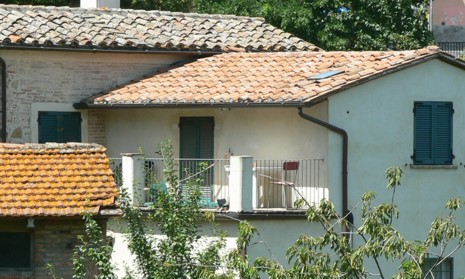
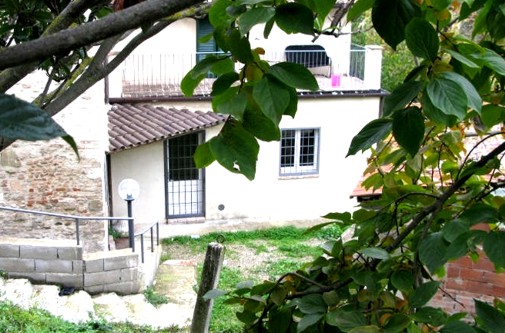
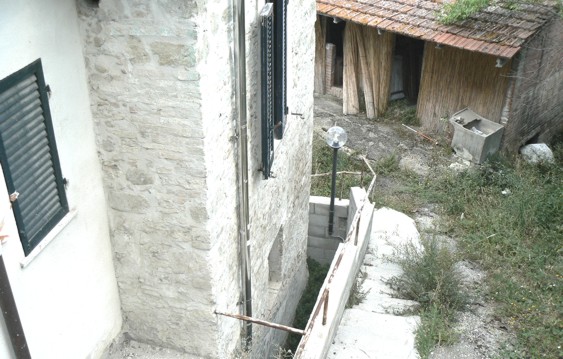
Saturday, January 12, 2013
How Much To Place Blame On Guede? IMMENSE Headache For RS & AK Teams
Posted by Cardiol MD

[Photo by Andrea Vogt as in December 2010 Supreme Court decides that Rudy Guede didnt act alone]
Zero To 100% Guede Was Claimed Sole Attacker
On a scale of 0% to 100% how much of the blame for the crime against Meredith has been heaped on Rudy Guede?
Well, it certainly varies. In trial court and first-appeal court it was never ever 100%.
Seemingly very scared of the harm Guede could do to their clients, if they provoked him into telling all, defense lawyers have acted consistently since 2008 and more-so since December 2010 as if they walk on eggshells around him.
In fact among the defendants and their teams only ONCE was Guede ever blamed 100%.
Sollecito’s bizarrely-titled Honor Bound 2012 book, the factually unchecked one, which now is causing him and his defense team so much trouble, was the first instance ever among those accused to try to blame Guede for the crime 100%.
Our next post will look at the categoric claims against Guede by whoever wrote that book. Meanwhile, here and now, let’s start at the beginning.
Commencing from when they were arrested, Amanda Knox pointed decisively at a black man, but of course she pointed at the wrong one: Patrick Lumumba. Make that 0% . Not long after they were arrested, Knox and Sollecito were strongly questioning the role of one another. So 100% against each other, but still a zero against Mr Guede.
In his messages from Germany Guede blamed two hasty intruders though he had no choice but to say he was there. Perhaps 33% at this point. After Guede was captured, Sollecito implied that they were at the crime scene together because he was worried that Guede would implicate him. Make that 50%.
At Guede’s short-form trial In October 2008, Judge Micheli blamed Guede 33% too. In sending Knox and Sollecito to full trial he dismissed the lone wolf theory (never really to be revived in court again) and he tentatively believed the evidence pointed to their being equally guilty.
In fact Judge Micheli tentatively blamed Knox for instigating both the attack on Meredith and the rearrangement of the crime scene. In effect he allocated 50% of the blame to Amanda Knox and 25% each to Guede and Sollecito.
Throughout trial in 2009 the Knox and Sollecito defense teams seemed to take great care not ever to blame Guede 100%, perhaps because (for murky reasons not made public) Rudy Guede had refused to testify against their clients.
Judge Massei assigned Guede 33% of the blame as he concluded that Guede had initiated the attack but that Knox and Sollecito had wielded the knives and that one of them had struck the final blow.
During trial and thereafter, the defense lawyers for the three were often on Italian TV and as our main poster the Italian lawyer Cesare Beccaria exhaustively charted in a four-part series, each “gently” blamed the other two.
We can assume that is either 33% or 50% but never more than that.
On February 24. 2011, in the Supreme Court report, on its rejection of Guede’s final appeal of his sentence for involvement in killing Meredith, blamed Rudy Guede and two others equally. Some 33% of the blame each.
The Supreme Court relied upon three facts: the physical evidence of Guede’s presence at the flat, Guede’s actual admission of his presence, and Guede’s implicit admission of shared-guilt in his documented Skype InstaMessage to Giacomo Benedetti on Nov. 19, 2007 (“I was scared that they would say I was the only guilty person”).
In a nutshell, the situation at the start of the Sollecito and Knox appeal before Judges Hellmann and Zanetti in 2011 was this:
- The Supreme Court had decided that Rudy Guede acting ALONE could not have attacked Meredith with several knives over an estimated 15 minutes, left so little physical evidence upon her, staged the break-in via the absurd route of Filomena’s window while leaving zero DNA in her room, placed Sollecito’s DNA on Meredith’s bra clasp, engineered several traces of Knox’s and Sollecito’s footprints outside the room, and placed the mixed DNA of Meredith and Knox in several different locations outside Meredith’s locked door.
- But there remains zero evidence that perps two and three which the physical evidence strongly pointed to were anyone other than Knox and Sollecito. There’s really not one speck of hard evidence to the contrary. Defenses somewhat desperately tried to engineer some at first appeal from the seemingly perjured testimony of jailbirds Alessi and Aviello and some smoke-blowing over the DNA testing, but in terms of HARD evidence came up empty-handed. Alessi did a meltdown on the stand, while Aviello turned completely cuckoo, and Judges Hellmann and Zanetti had to invent arguments frantically to dig Knox and Sollecito out of that hole.
I have done a series of posts (to be read from the bottom upward) on the Hellmann-Zanetti outcome covering many other aspects of their strange arguments.
Back in late 2010 some of us at TJMK were impressed at the alacrity with which Judge Hellman selected Conti and Vecchiotti.
We were thinking that “he had already thought it all out” [we seem to have got that-much right], and that he was “being prudently responsive to the legal and political pressures bearing down on him, and knows the ruling also calls the defendants’ bluff.”
I had posted that the defenses of Knox and Sollecito seemed to be trying to exclude evidence that they themselves tried to destroy, essentially on the grounds that their destructive attempts failed to destroy all of it, and left behind only some of it. Their argument had boiled down to whether the disputed DNA evidence is more unfairly prejudicial than probative.
It was my opinion that because it was the defendants’ deliberate conduct that nearly succeeded in extinguishing all their DNA, any US and UK courts would admit this highly relevant evidence, and let the participants duke out its fairness, in open court, in front of a jury.
I had thought that was what the Massei Court had already done, and was what the Hellmann/Zanetti court was then doing. The Hellmann/Zanetti court was doing that - but that was not all it was doing, as we now know and regret.
I had believed that the defendants would bitterly regret their petition for such DNA Expert-Opinion Review. We should know in March 2013 if they regret it at all, let alone “˜bitterly’. So far they may not, but Sollecito’s current venture into special-pleading journalism in his book seems likely to accelerate their journey to a bitter and regretted destiny.
We were less impressed with how Judge Zanetti started the appeal hearings.
To his eternal discredit Judge Zenetti uttered words to the effect that “the only thing that is “˜certain’ in Meredith’s case is that Meredith is dead.” Nothing else. In effect, illegally promising a whole new trial at appeal level - very much frowned on by the Supreme Court.
Unless the word “˜thing’ is a mistranslation, that is not the only thing that was already certain in Meredith’s Case; Many Things were then certain in her case.
For example, it is certain that the first-ever documented references to Meredith’s scream just before she was killed had already come both from the mouth of Amanda Knox herself, and from the hand of Amanda Knox, in the case of her contemporaneous personal hand-written notes.
Guede, himself, had certainly already made a documented reference to Meredith’s scream.
It was also certain that Guede had made documented references to his actual presence when Meredith screamed.
Some of these already-certain facts inconveniently undermined Hellmann’s and Zanetti’s already-assumed conclusions, so they then proceeded in-turn to undermine the “˜reliability’ of those facts, e.g. “˜it is not certain that the scream was Meredith’s scream; it could have been someone-else’s scream’; or even Amanda’s scream?
The Massei court had exhaustively presented the evidence from all sources in their conclusion that Knox and Sollecito were the ones who shared Guede’s guilt. But Hellmann/Zanetti then contradicted ALL the previous finders-of-fact with regard to Guede, essentially using five ploys in arguing:
- That Guede was Unreliable: “for example, in the questioning before the Prosecutor, he denies being known by the nickname of Baron, “¦.so as to result in a version completely incompatible with the reality of the facts as perceived and heard…” [Is that ever giving birth to a mouse?], and
- That the Supreme Court had “held Rudy Guede to be an Unreliable person”, and
- That “therefore, among the evidence against the two accused, the testimony given at the hearing of June 27, 2011 by Rudy Guede cannot be included because it is Unreliable, nor can the contents of the letter written by him and sent to his lawyers”, and
- That concerning Guede’s documented Skype InstaMessage to Giacomo Benedetti on Nov. 19, 2007 “”¦ the contents of the chat between Rudy Guede and his friend Giacomo Benedetti on the day of November 19, 2007, also listened to by the Police, can be considered in favour of the two accused”, because “he would not have had any reason to keep quiet about such a circumstance,”
- And that “So, in the course of that chat with his friend….. Rudy Guede does not indicate in any way Amanda Knox and Raffaele Sollecito as the perpetrators…..” and “.....he would not have had any reason to keep quiet about such a circumstance….. he being…. certainly the perpetrator….. of the crimes carried out in via della Pergola, that if Amanda Knox and Raffaele Sollecito had also participated, that he would at that moment have revealed this to his friend.”
So, summarising Hellmann and Zanetti, they have absurdly argued a contradiction:
- Because of Guedes notoriously unreliability, the public evidence in which he did accuse Knox and Sollecito cannot be considered as evidence of their guilt, but
- In spite of Guede’s notorious unreliability, because Guede did not accuse Knox and Sollecito in a private conversation this must be considered as conclusive evidence of their innocence.
We are not the audience to which Dr Galati’s appeal against Hellmann and Zanetti to the Supreme Court is directed. Most of us probably have some difficulty with its legalese, translated into English, so bear with it.
Dr Galati’s appeal against Hellmann and Zanetti refers to Guede’s documented Skype InstaMessage to Giacomo Benedetti on Nov. 19, 2007 as follows:
The Hellmann/Zanetti court, “has”¦ made “¦. completely anomalous use of the Skype call, accepting it for the time of Kercher’s death, but not for other circumstances which are also extremely relevant for judgment purposes, but which have been totally ignored.
In fact, in the call, Guede recounts having heard Meredith complaining about her missing money and of her intention of asking Ms Knox, with whom she had quarrelled, for an explanation (p. 10 of the call [transcript]), of having seen Meredith look in vain for the missing money in her drawer (p. 18), then of having seen Meredith look, still in vain, for her missing money in Amanda’s room (pp. 18-19 of the call [transcript]), and of having heard a girl enter the house, who could have been one of the roommates, thus Amanda (p. 11 of the call [transcript]), while the Ivorian found himself in the bathroom, just before hearing Meredith’s terrible scream which would have caused him [59] to exit the bathroom, about five minutes after the girl’s ingress (p 12 of the call [transcript])”... .
The Court has, in practice, without reason thrown the responsibility onto Guede for throwing the rock and clambering in (see pp 121-122 of the appealed judgment): in the same Skype call, Guede, however, repeatedly denies having seen the broken window in Romanelli’s room during the whole time in which he was in the house at Via della Pergola on that evening (pp 8, 20, 34 of the call [transcript]). Not only that: Rudy Guede also said that he was at Knox’s many times”› (pp 88 of the call [transcript]).
If the Court held the Ivorian citizen to be sincere in the tele-conversation with his friend Benedetti, then why not also believe him when he denies having broken in, or when he recounts Meredith having it out with Amanda, or when he says that he had been at the latter’s place many times”›?
Dr Galati’s appeal to the Supreme Court argues that the Hellmann/Zanetti appeal judgment, apart from being manifestly illogical, is manifestly contradictory with respect to the contents of the case file referred to (Article 606(e) Criminal Procedure Code). Here is what it says about their tortured interpretations of Rudy Guede.
And in the Skype call with Benedetti, intercepted unbeknownst to him, there emerge circumstances that confirm Guede’s court declarations. The Court takes the Skype call with his friend Benedetti into examination, valuing it “šin favour of the two accused”› both for what it does not say and also for what it does say, and this it does building from one, not only unexplained, datum but which would have taken little to deny: since Rudy was outside of Italy, he was in some sense safe”› and thus could well have been able to tell the whole truth (p 40 of the judgment).
Not in the least does the Court depart from the presupposition that in this call Rudy would have been telling the truth and, because in this call he would not have named the current defendants, these have got nothing to do with the homicide. The Court does not explain, though, that even in this call Rudy was tending to downplay his responsibility and, if he had named his co-participants, that would have easily allowed, by means of investigations and subsequent interviews, the bringing out of his causal contribution and of his responsibility.
[91] Of the things said in this Skype call, the Court seems at one moment to want to value the chronological datum from 9:00 PM to 9:30 PM to affirm that this would therefore have been the time of death of Meredith; successively, though the appeal judges, following the principle of plausible hypothesis, in relation to the outgoing calls on the victim’s English handset, have moved it to 10:15 PM, but they have not altered the reliability of the time indicated by Guede.
In truth, during the course of the conversation, Rudy recounts having heard Meredith complain about the missing money and of her intention to ask Knox, with whom she had argued, for an explanation (p 10 of the call); of having seen Meredith look in vain for the missing money in her drawer (see p 18); of having seen her search, again in vain, for the missing money in Amanda’s room (pp 18 and 19 of the call) and of having heard a girl enter the house ““ who must have been one of the flatmates, thus Amanda (p 11 of the call), ““ while he was in the bathroom, a little before hearing Meredith’s terrible scream which would have induced him to exit the bathroom, about five minutes after the ingress of the girl (p 12 of the call).
And also, on the subject of the break-in in Romanelli’s room ““ thrown without explanation onto Guede’s back (see the judgment being appealed from, at pp 121 and 122) ““ can remarks by the Ivorian citizen be found in the transcription of the intercept. Guede repeatedly denies having seen the broken window in Romanelli’s room for the whole time in which he was in the house at Via della Pergola that evening (pp 8, 20, 34 of the call).
If the [Appeal Court] had held as reliable what Rudy narrated in the Skype call relating to the time in which Meredith was killed, it supplies no reason at all, on the other hand, for why it does not believe him as well when he denies [92] having committed the break-in or when he recounts the quarrel of Meredith with Amanda.”
None of this changes my own beliefs that there are even many more things in evidence that are “˜beyond any reasonable doubt’. For example:
- It is beyond any reasonable doubt that Meredith was restrained by hands other than the knife-wielding hand(s); and that Meredith was restrained by the hands of two, or three persons as she was killed.
- It is beyond any reasonable doubt that steps were taken to clean away smears made by Meredith’s blood in the place where she was killed, and tracks of Meredith’s blood transferred by her killers to other places.
- It is beyond any reasonable doubt that steps were also taken to simulate a break-in that never-was.
In the next post, we examine Dr Galati’s appeal further and the strident claims against Guede made in Sollecito’s own book which contradict some of the positions of HIS OWN LAWYERS. Note that Dr Galati has argued in the appeal that it was ILLEGAL for Hellmann and Zanetti not to have taken the Supreme Court’s ruling on three perps fully into account and having innored it or brushed past it.
Verrrry tough situation for defense counsel to be in.
Tuesday, October 04, 2011
The Guardian Publishes A Negative Take On Italian Justice Rather Poorly Researched
Posted by Peter Quennell
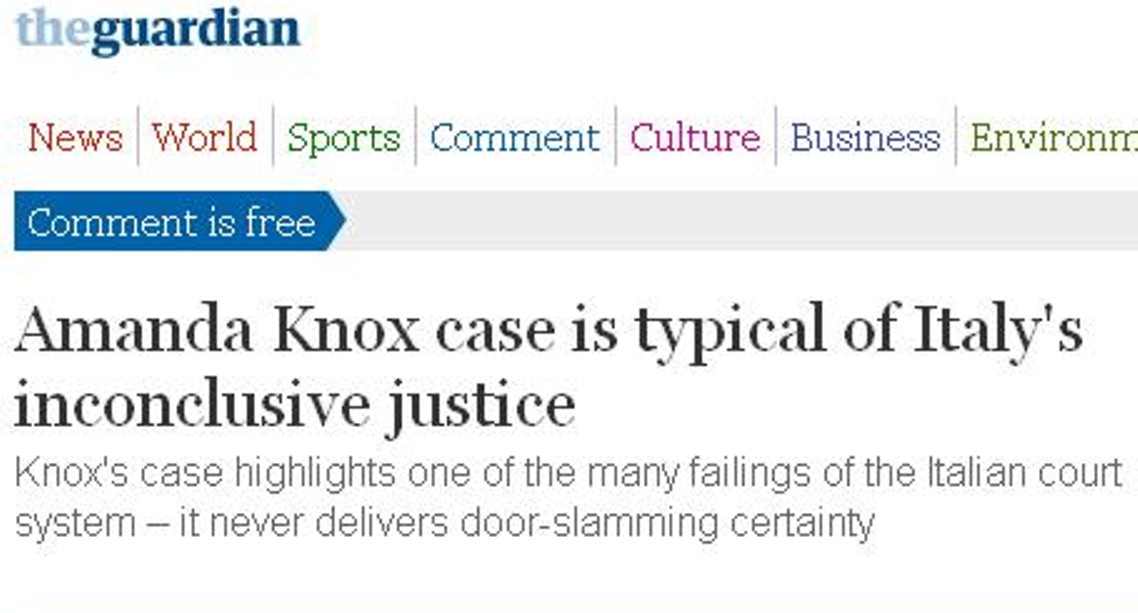
Click above for Tobias Jones’s take in the Guardian which seems to be trying to report evenly on the case..
Here are our most-read posts on first trials by Italian poster Nikki and the two appeals by Italian poster Commissario Montalbano and often-overlooked victims’ rights about Italian campaigner Barbara Benedettelli.
All explain better than Tobias Jones does the many hoops that prosecutors have to jump through for victims’ interests to come out ahead..
We can agree with Tobias Jones on this below - the elaborate, expensive and slow automatic first appeals complete with lay judges who don’t see the first pass of the evidence at first trial and often act as a wildcard in the process.
It’s one of the many failings of Italian justice that it never delivers conclusive, door-slamming certainty. What usually happens is that the door is left wide open to take the case to the next level, first to appeal and then to the cassazione, the supreme court. The score in the public imagination, at the moment, is simply one-all.
It’s always been that way. There’s barely one iconic crime from the post-war years that has persuaded the country that, yes, justice has been done: the murder of Pier Paolo Pasolini, the Ustica crash, the Bologna railway station bombing, the Piazza Fontana atrocity, the Monster of Florence murders, the murder of Luigi Calabresi, the “caso Cogne” “¦ none has ever been satisfactorily, convincingly resolved. Instead the country seems to split into innocentisti and colpevolisti (those who believe in the innocence or guilt of the accused) and the heated debates continue for decades.
But we’d agree less-so, at least from an American perspective, with the Italian uniqueness of this below.
Dietrologia ““ literally “behindery” or conspiracy-theorising ““ is a national pastime precisely because the courts don’t offer convincing verdicts. It allows every journalist, magistrate and barfly to try their hand. The result is that everyone with an active imagination has a go at explaining the truth behind the mystery, and inevitably the truth only gets further buried beneath so many excited explanations. The media plays an active role in keeping the circus going: in no other country are cronache nere ““ “black chronicles” ““ so much the mainstay of the evening news. There’s always a case on the go.
Tobias Jones should watch the urbane elegance of the Porta a Porta shows, which are reminiscent of human games of chess, and then visit the US and watch all the cable news channels devoting many hours a day to legal talking heads debating one another over high-profile crime cases. CNN and MSNBC could probably not survive without them (Casey Anthony was a godsend) and they go back to the OJ Simpson trial when it seemed half the country joined in.
He probably has a good point about subjudice (blackouts on court news in the UK) but there’d seem more chance of a wrong outcome driven by public opinion in the US with its elected judges and police chiefs and prosecutors angling for news exposure than in Italy. (Judge Michael Heavey is an elected judge.)
Local public opinion in the US is very much behind the high execution rate in several American states and the difficulties non-whites often have in getting off.
Friday, May 27, 2011
Questions For Knox and Sollecito: Address These Several Hundred On The Hard Evidence
Posted by Our Main Posters

These questions were first addressed to Rocco Girlanda, the pro-Knox Member of Parliament. who came up empty-handed.
This Open Letter to Rocco Girlanda was first posted and sent to him in English on 9 November 2010. Six-plus months later, no response. We are now reposting it and mailing it in Italian, as Italian media and opposition MPs are interested in asking him these same questions.
Mr. Rocco Girlanda
Parliamentarian for Gubbio in Umbria
Chamber of Deputies
Parliament of Italy
Rome, Italy
Dear Mr. Girlanda:
Questions Concerning Your Hurtful Behavior Toward The Family and Friends Of Meredith Kercher
And Also Concerning Your Ethics, Your Politics, Your Legal Behavior, And Your Personal Behavior
Your book Take Me With You ““ Talks With Amanda Knox In Prison” is leaving readers with a number of disturbing questions as to your motives, timing and interests in writing the book and publishing it at this time.
These questions concern whether your book - or at least its publication right now, directly before the important first level of appeal - is in fact very unethical, and they also concern the appropriateness of the nature of your relationship with Miss Knox.
In order to put these these questions to rest, we are sure that you will be eager to know what they are, and to respond to them in your best way possible. We’d be pleased if you would reply to us through our return address, or - given the public nature of this discussion - email it for posting directly on the TJMK website.
Here are the questions we have assembled. Again, we thank you in advance for your replies:
- Do you believe in the separation of the executive, parliamentary and judicial branches of government? Since you are a parliamentarian (and, in particular, a member of the judiciary committee), do you think that the publishing of your book at this time could be seen as being inappropriate, given the calendar of Amanda’s appeal for her murder conviction, as well as the ongoing trial for slander (for having accused the Perugian police of hitting her during questioning)?
- When you visit prisons in your role as a parliamentarian, what is your main objective: perform an independent check and control over prison conditions, or befriend prisoners? After how many visits to Capanne prison did you realise that you had established a friendship with Miss Knox? How often do you visit prisons in Italy? Which other prisons have you recently visited? Do you visit men’s prisons? Do you regularly give gifts to prisoners, like the books or the computer you gave to Amanda? If you consider that the computer was not a personal gift but rather from the Italy-USA Foundation of which you are president, which other American prisoners in Italian prisons have received such gifts? Which criteria does the Foundation follow in deciding who receives gifts? (for example, prisoners who have expressed repentance, or prisoners who have to use free legal aid due to financial penury, or prisoners who contribute to awareness programs to help others avoid similar crimes in the future ....).
- As president of the Italy-USA Foundation, you have expressed concern that this case has strained relations between the two countries. Have you spoken with the US Embassy in Rome about your concern? Within the framework of Italian-US relations, are there any other issues which you think come close to your-perceived significance of Amanda’s involvement in murdering Meredith Kercher? (for example: Italy’s middle east policy concerning talks with Palestinian organisations, or discussions about the acceptance by Italy of Guantanamo inmates, or the ongoing state of Fiat-Chrysler relations and investments, or the rooting out of organised crime, or even Berlusconi’s joke about Obama being handsome and suntanned?)
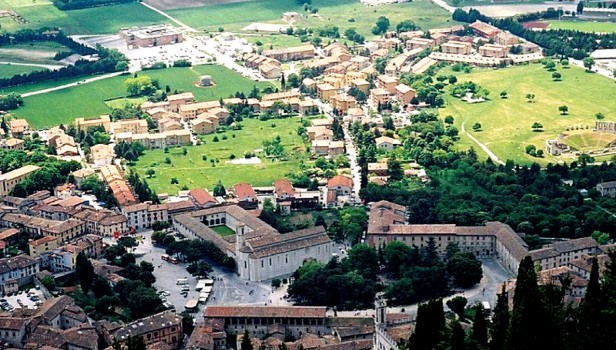
[Above: the village of Gubbio to the north-east of Perugia which Rocco Girlanda currently represents]
- In your over 20 parliamentary privilege meetings with Amanda Knox, did she ever act in a bizarre manner, like performing cartwheels for you? Why didn’t you ever ask her about her murdered roommate, Meredith Kercher or in general about the crime? Can your book really be of any interest to anyone if it only contains bits and pieces of poetry and banal conversation, without linking Amanda to the case which has put her into jail? How can your book come close to one of its supposed objectives - that of trying to understand how a young person could be involved in a violent crime such as that of Meredith Kercher’s murder - it you make no reference to the crime?
- You have stated that you have daughters similar to Amanda Knox. In what ways are your daughters comparable to Amanda? Studies? Personal life and use of drugs, or social habits with the opposite sex? Some other way?
- Amanda wrote you a letter (amongst others) on 7 August 2010, where she tells you in Italian, “The only thing I can show you is my gratitude for your friendship and your support.” What is the extent and what are the characteristics of this friendship and support? Is Amanda’s gratitude one-sided, from the perspective of an emotionally weak prisoner who becomes dependent on any stranger who shows her the slightest kindness, or do you mutually share this friendship which she describes, between the two of you? Do you know if Amanda’s Italian legal team are aware of the extent of your friendship? Do you think that your friendship may actually somehow complicate her legal situation and strategy?
- You describe an affectionate hug between you and Knox: “I blush. She holds me, I hold her. It’s a never ending embrace, without a word. If I said I didn’t feel any emotion I would be lying. Maybe my face reveals that.” is what was quoted in the Daily Mail. Have you ever told a priest, psychologist, psychiatrist, social worker, drinking buddy or your wife about your physical contact with Amanda and your nocturnal dreams which involve her? If so, what advice have they given you?
- Did you attend any of the Knox-Sollecito trial sessions over the course of the year that it was held? (it would have been easy: you could have taken advantage of visits to your parliamentary constituency, just as you have found it easy to visit Amanda in jail). Are you familiar with the evidence? Are you aware that there are two other persons convicted for the same crime together with Amanda? Do you know if - like her - they write poetry and want to be parents when they are freed from prison (a number of years from now)? Do such desires for life under regained freedom make any convicted prisoner less guilty of the crimes they have committed?
- Do you feel that there were any specific errors or problems with the investigation in this case which you believe may contribute to an incorrect verdict and sentence for the three suspects? Did Amanda get a fair trial compared to any other similar crime investigation and legal process in Italy?
- Are you able to offer an explanation as to why not once have the Kerchers and their lawyer, Francesco Maresca, ever been worried about the trial outcome? After three years, why is it that Francesco Maresca still has no worries and is confident that the convicted will lose their appeals?
[Above: Mr Girlanda with images of herself by Amanda Knox released about simultaneously with his book]
- Do you believe that any of the investigation or judicial officials involved in this case are corrupt, or that any type of corruption played a role in their activities? Don’t be shy, please identify those who did wrong amongst Prosecutor Giuliano Mignini, Prosecutor Manuela Comodi, Judge Claudia Matteini, Judge Paolo Micheli, Judge Giancarlo Massei, Judge Beatrice Cristiani, the six lay judges, Appeals Judge Emanuele Medoro, Homicide Chief Monica Napoleoni, Inspector Rita Ficarrra, DNA expert Patrizia Stefanoni, or any other person involved in this complex case. Was there a conspiracy of corrupt officials who directed an evil campaign against an obviously innocent girl with no real evidence against her?
- As a followup to the prior question, do you know that not one credible international attorney or professor of comparative criminal law and procedure has taken the defense of Amanda Knox, claiming injustice in the Italian judicial system? Do you agree that the Italian criminal system is fair, balanced and completely pro-defendant?
- Do you know that Italian citizens constantly complain of their relaxed criminal laws and that criminals are constantly set free even after being sentenced on appeal while waiting for the confirmation of the Cassation Court? For example, little Tommy would still be alive if Mario Alessi had been kept in prison after being convicted on appeal for raping a minor. As a politician, don’t you think the law should be changed by keeping violent criminals in jail after being convicted on appeal, in order to guarantee the security of the citizens of the country you represent?
- Do you know that the Italian attorneys of Amanda Knox don’t approve of this media propaganda perpetuated by the Knox-Mellas clan, that seems intent on spreading falsehoods and misinformation, while at the same time blaming an entire country (the one you represent in parliament) for an alleged “wrongful conviction”?
- In promoting your book, you have stated that during your more than 20 meetings with convicted murderer Amanda Knox, a “friendship” has grown. Would you classify that as a friendship of convenience or a friendship based on caring for the interests of the other? We ask that because it truly shocks us that Knox’s Italian legal team was humiliated, and Knox herself was deprived professional legal advice and support through the publication of your book without it being vetted by her lawyers. “She is very worried,” said Knox’s lawyer Luciano Ghirga, declining to comment on the book which he said he has not seen. “She is not at her best. She is very worried” ahead of the appeal, he added. Although the book will likely change little in Knox’s legal predicament, I would have thought that a “friend” who was also a law-maker would realise the importance of consulting the other friend’s lawyers concerning the possible fallout of a personal literary initiative such as yours.
- Do you know that the American Embassy has followed this case from day one and reported to the State Department? Do you know that the Embassy stated that the trial was fair? Do you know that the State Department never expressed concerns about the outcome of the trial?
- Do you know that the only American politician that once spoke out regarding this trial was Mrs. Maria Cantwell from Seattle when she asked Mrs. Clinton to verify if Italy is a third-world country with a barbarian criminal system and if Amanda Knox was sentenced only because she is an American citizen?
- How did you and your associate Corrado Maria Daclon prepare his list of contacts that he met with in his trip to Seattle when you were writing your book? Did some person or persons arrange for meeting with these contacts? Was this person associated with the Knox-Mellas Entourage?
- Have you ever read the 430-page Sentence Motivation Report (“Dispositivo Della Sentenza Di Condanna”) written by Judge Massei who presided over the Knox-Sollecito trial? Do you know that there is overwhelming evidence against Amanda Knox and that the information spread out by the expensive PR team, hired by the Knox family, is neither a complete nor trustworthy story?
[Above: Giulia Bongiorno. Concern that Rocco Girlanda has gone way beyond what is appropriate to his parliamentary privilege to visit prisons “to inspect conditions” is further inflamed by his presence on the Italian parliament’s Judicial Committee. This committee, amazingly, is presided over by Raffaele Sollecito’s lead defense lawyer: Giulia Bongiorno. Is Giulia Bongiorno turning a blind eye to Mr Girlanda’s extraordinary number of visits, which seem highly abusive of his privilege, and exceed the quota of any family member?]
- Do you know that the vast majority of Americans have no idea of who Amanda Knox is? For example, if you look at the number of hits on videos posted by the Knox clan on YouTube, you would discover that few hundred people have visited the site. Also, do you know that the vast majority of Americans that have heard about this case think she’s guilty?
- Do you know who Steve Moore is? As President of the of the Italy-USA Foundation, do you, Mr. Girlanda, approve the insulting assertions of Mr. Moore when he says that the Italian police questioning of Amanda is typical of a “third world country”? That is was “something close to water-boarding”? Do you know that Steve Moore said that Amanda’s accusation of Patrick Lumumba, an innocent man, was “recanted by Amanda as soon as she had gotten some food”? Do you know that this weird individual said that “the court of final appeal is going to be the press. It’s going to be the public”?
- Have you ever read or seen Steve Moore on American national television? Do you know that he has been interview by all major American television news stations, spreading falsehoods and misinformation? Do you know that Mr. Moore has been accusing Italy as a whole as been responsible for what he calls a “wrongful conviction”, in a “railroad job” by a “psychopathic prosecutor”? Do you agree with him?
- Of the crime scene, Steve Moore said that “there was blood everywhere. There were foot prints, fingerprints, palm prints, hair, fluid samples, DNA of just one person: Rudy Guede”. Do you know that Rudy Guede left very little evidence for someone who has admitted been there and touching everything? Do you know that Guede left no hairs, no saliva, no sweat, no blood, and no other bodily fluid at the scene of the crime? Do you know that Amanda Knox and Raffaele Sollecito left plenty of DNA evidence and footprints all over the crime scene? Do you know that Steve Moore is telling falsehoods? Do you know that the motivation report clearly explains, without a minimal doubt, that more than one person was present during the murder of poor Meredith? (Please do read Judge Massei’s report)
- Steve Moore says that the interrogation of Amanda Knox at the police station “was the most coercive interrogation I have ever seen admitted into a court in the last 20 years”. Do you know that the interrogation at the police station on the evening of November 5, 2007, before the arrival of the prosecutor, was just 1 hour and 45 minutes and that Amanda was treated like any other witness that had just been caught lying?
- Have you ever visited Raffaele Sollecito or Rudy Guede in jail and are you planning to write a book on them as well?
- We have just heard that the bound edition of your Amanda Knox book has been pushed by the conservative publisher at least as far away as next spring. Could this be cold feet on the part of your publisher, who may not want to be associated with the public relations campaign of a convicted killer? Or of a disaster in terms of predicted sales? Your agent Patrick King seems in a furious rush now to get the book out one way or another for Christmas .... who on earth would want to give a Christmas gift to a friend or loved one which is composed of bizarre sweet talk with a convicted murderess?
- Are you even slightly aware of the deep hurt which you have caused to the Kercher family and Meredith’s many friends with your book? Do you know that some persons with great sympathy for them have words for you like “a pretty cruel heartless bastard”?
Finally, Mr. Girlanda - and we thank you for your patience in responding to these questions, which many concerned Americans and non-Americans have helped us compile - you have indicated that the proceeds from the sale of this book will go to the U.S.A.-Italy Foundation of which you are president.
If this budget injection is not used to make gifts of additional computers for more American prisoners in Italian jails beyond Amanda Knox, would you please consider applying part of the book proceeds to the new scholarship that the Perugia city council has established together with the University for Foreigners, in memory of Meredith Kercher?
It would be a wonderful gesture which would respond positively to those many Americans and non-Americans who are concerned that Amanda Knox’s conviction for the murder of Meredith should not be spinned into a money-grubbing show-business performance, where the only victim of this case - Meredith - is forgotten, and instead through some sort of twisted publicity campaign, one of the guilty parties is converted into a sympathetic Mother Theresa who escapes fully responding for her crimes.
The original of this letter in English and Italian has been emailed and sent in hard copy to your office in Rome. We greatly look forward to your various responses and will be happy to post them in Italian and English here.
Very many thanks in advance from people all over the world who are seeking true justice for Meredith
Signed in the original for the Main Posters Of TJMK
Who include a number of American and Italian lawyers
Monday, April 04, 2011
Today An Obsessional Group Rant About “No Evidence” By A Stacked Panel At Seattle University?!
Posted by Peter Quennell
Seattle University is a small Jesuit college just this side of Seattle’s downtown.
Today at 4:00 pm in the Pigott Auditorium, in what seems to us a seriously dopey and un-academic exercise, some of the most obsessed of the conspiracy theorists will assemble to peddle their illusions.
Two of the panelists, Paul Ciolino and Steve Moore, have been exhaustively debunked on TJMK in the past, and sooner or later we will probably turn our attention to debunking the other two: Mark Waterbury, and Candace Dempsey.
Our posts on the hotheaded faux detective Paul Ciolino are here, here, and here, and our posts on the hotheaded faux FBI murder investigator Steve Moore are here, here, here, and here.
The other two panelists, Mark Waterbury and Candace Dempsey, have authored slow-selling books which studiously ignore 95 percent of the evidence and mis-state the other 5 percent. Tom Wright of the Friends of Amanda Knox group will be presiding.
Would you like to attend, well-equipped with some questions? Ask these questions and these questions and these questions. Around 400 in all. Any reports would be appreciated.
Below: Seattle University President Father Steve Sundborg. Does he know what his film department is getting up to?
Thursday, March 10, 2011
Giuliano Mignini’s Trumped-Up Conviction For Guessing Right In The MOF Case
Posted by TomM

We previously posted on the case here and here and here.
Giuliano Mignini became involved in the Monster of Florence case only years after many people had already come to believe a satanic sect in Florence might be behind the MOF murders. But he pursued it with a vengeance when a body that in 1985 mysteriously washed up on the shore of a lake in his jurisdiction showed signs of murder.
And when the crime fiction writer Doug Preston injected himself into the case under a pseudonym and appeared to be planting evidence, Mignini gave him a very brief shaking up and Preston timidly removed himself from the case and from Italy - to turn to inventing a whole lot of fiction about it from safely across the Atlantic.
Here now is the fine Italian journalist Adriano Lorenzoni, describing The Strange Conviction of PM Giuliano Mignini by the prosecutor whose frustrated conversation was captured (the recording seemed to prove there was indeed a satanic sect in Florence) in objective terms that prove sympathetic to Mr Mignini.
Translation here is with the kind help of my fellow poster Clander.
The Perugian investigation of the instigators of the crimes of the Monster of Florence has, in effect, been stopped.
In January of 2010 the Public Prosecutor of Perugia, Giuliano Mignini, and the former head of the flying squad of Florence, Michele Giuttari, were sentenced by the Court of Florence on the charge of abuse of office in an investigation into some Perugians connected to the “instigators” of the crimes of the Monster of Florence. According to the prosecution’s theory, Mignini and Giuttari illegally wiretapped and investigated journalists and law enforcement officials to influence their activities.
These are abnormal proceedings, since the Public Prosecutor Mignini had been properly authorized by the Investigating Magistrate of Perugia to use wiretaps for his investigation, actions that he had the duty to carry out. Abnormal proceedings also because leading the investigation against Mignini and Giuttari was the same Public Prosecutor’s Office [Procura] that Mignini [PM di Perugia], had investigated the head of, Ubaldo Nanucci. Not by chance did Dr Mignini object to the jurisdiction of that Office [Procura] to carry out the investigation and raise objections of the legitimacy of the judgment. The Court of Appeal of Florence will hear the appeal next November 22 [2011].
This all springs from a recording made by Michele Giuttari of one of his conversations with a Deputy Prosecutor of Florence, Paolo Canessa, in which Canessa states that his boss was not a free man and admits to having been hindered by the then Prosecutor General, Ubaldo Nannucci, regarding the requests of Dr Giuttari into the investigation of the crimes of the Monster of Florence.
Giuttari [then] sent the recording to Mignini, who turned it over to the Prosecutor’s Office of Genoa which had been authorized to investigate the magistrates of Florence. Prosecutor Nannucci was then investigated [verrà inquisito] for having slowed down, or rather obstructed, the investigation of the Monster of Florence. Genoa promptly dismissed [archivierà ] it.
Giuttari continued to complain to Mignini about the conduct of the police commissioner of Florence, De Donno who, as ordered by the Ministry of Internal Affairs, should have set up a new wire tapping room for the GIDES (serial crimes investigative unit) where Giuttari and his men were working [si erano sistemati]. De Donno never set up the new room [cosa che non fa]. Mignini charged him and sent the file to Florence.
A question comes to mind: where is the abuse of office in all of this?
It is also puzzling why there was such an apparent lack of interest in the investigations conducted by Michele Giuttari, even when they are not being obstructed. “The instigators must not be investigated because there are only conjectures, a fruitless waste of time,” Giuttari is told.
Astonishing. As long as the [lowlife] “snack buddies” are being investigated [for the MOF , all is well. It’s fine to investigate Pacciani, Lotti and Vanni; but when the investigation tries to produce greater results [si alza il tiro], problems start to arise. Michele Giuttari was even relieved of his post and transferred.
Prosecutor Mignini’s office is searched and documents from an ongoing investigation into the death of the Perugian doctor Fransesco Narducci are seized, documents which Mignini had without success objected were secret.
Another question comes to mind: why so much fear (in Florence and in Perugia) about the investigation of the death of Francesco Narducci?
According to the Perugian Public Prosecutor [Mignini], Francesco Narducci was connected in some way to the Monster of Florence case. Giancarlo Lotti, one of the [lowlife] snack buddies, asserted that some doctor was given the amputated parts of a female body, in exchange for money.
Crimes, therefore, on commission [i.e. murder or mayhem for hire] by a doctor. A real doctor, not the mere pharmacist, Francesco Calamandrei, of San Casciano val di Pesa. Among other things, during the investigation it emerged that Calamandrei and Narducci knew one another. Narducci then died in unclear circumstances on October 13, 1985. Drowned in the waters of Lake Trasimeno. One month after the last murder committed by the Monster of Florence.
Suicide was claimed at that time. A truth considerably less than believable. So much so that while the Preliminary Investigations Judge [GIP], Marina De Robertis, dismissed the case for lack of enough evidence [con formula dubitativa] the hypothetical murder case against certain suspects (the journalist Mario Spezi, the pharmacist from San Casciano, Calamandrei, and others) and declared it time-barred, still, evidence exists of other crimes committed at the time: the concealment and abduction of a corpse and the falsification of numerous public records.
Moreover, since last April, we have been waiting to learn the reasoning with which, for different reasons, including claimed lack of evidence, the Preliminary Hearing Judge, Paolo Micheli, acquitted twenty people (including Narducci’s father and brother) of charges of forgery, criminal conspiracy, dereliction of duty, and concealment of a corpse.
Against this decision of the Preliminary Hearing Judge, Public Prosecutor Mignini will most likely file an appeal as soon as the sentencing reports are lodged which should have been lodged last July 20 [2010].
Mignini and Giutarri were acquitted of the charges of abuse of office (and Mignini also of aiding and abetting Giuttari) because it was not proven that any crimes were committed [i fatti non sussistono] (and the Florence Prosecutor’s Office did not appeal).
[The abuse of office charges] related to their so-called parallel investigations to those of the Genoa Prosecutor’s Office, which was investigating the former head of the flying squad of Florence for false acts [falso] due to the recording of the conversation with the deputy [Prosecutor] Canessa (of which we have spoken above) which, according to the indictment, had been tampered with. This investigation then led to the search of the office of the Public Prosecutor of Perugia [Mignini’s office] and the seizure of numerous investigation documents.
Needless to add that the proceedings against Giuttari and the two police officers concluded with a judgment of non-suit for absolute lack of foundation of fact, as proclaimed by the Genoan Preliminary Hearing Judge Roberto Fenizia. The “aberrant” conviction of Giuliano Mignini does not have immediate disciplinary consequences of any kind. The disciplinary proceeding is in fact suspended until the resolution of the criminal case on which it depends.
And Public Prosecutor Mignini is able to continue to carry out his functions, in trials of great importance and of international interest, such as that relating to the death of the English student, Meredith Kercher.
Thursday, August 26, 2010
Is The Campaign That Ranted Against Italy For So Long Now Fearing An Italian-American Backlash?
Posted by Peter Quennell
This bizarre Seattle PI blog post suggests that the Knox PR campaign may now fear a major Italian-American backlash.
Really?!
Not exactly surprising, after first stirring up so much anti-Italy hate - remember “third world country” and “keystone cops” and “kangaroo court” and “saving face” and “anti Americanism” and “tabloid journalism” and on and on?
Not to mention “evil Mignini” hoodwinking everyone in Italy all the way up to the Supreme Court with “satanic conspiracies” that work easily in a “catholic country” implying everyone there is too prudish or simply not very bright?
When did they ever say anything about Italy that was actually nice? Or restrain their forces from being over-the-top nasty, as with the venom the white knights STILL direct toward Mr Mignini?
Really GOOD PR people seek to merely shade the truth.
They don’t ever build a campaign around a really big lie, because when the really big lie comes down, it really comes crashing down and ALL is lost. A result worse than if there had been no campaign at all.
Proof? Read the many hard, angry and incisive comments right under that blog post. And we know that Italian Americans now are showing some sure signs of having had more than enough.
Not exactly a PR man’s dream.
Added: Important Breaking News
We all already know that the US State Department up to and including Hillary Clinton not only finds the Knox campaign ludicrous and very unhelpful - they also regard it as xenophobic.
Now the chief of staff of an Italian-American member of the US Congress in Washington DC (not, obviously, David Wu’s chief of staff) has sent us this request.
He would like to get every possible example of the sliming of Italy and the Italian officials on Meredith’s case, including the sliming of Giuliano Mignini.
Please could our readers email or post here below any examples you may know of? We may create a new TJMK page just for them.
This may factor into political races in November, and there may be a political motion in the US Congress to stop this vile anti-Italy campaign dead.
Tuesday, December 08, 2009
Most Important Italian Paper Balks At The Attempts In US At Intimidation
Posted by Commissario Montalbano
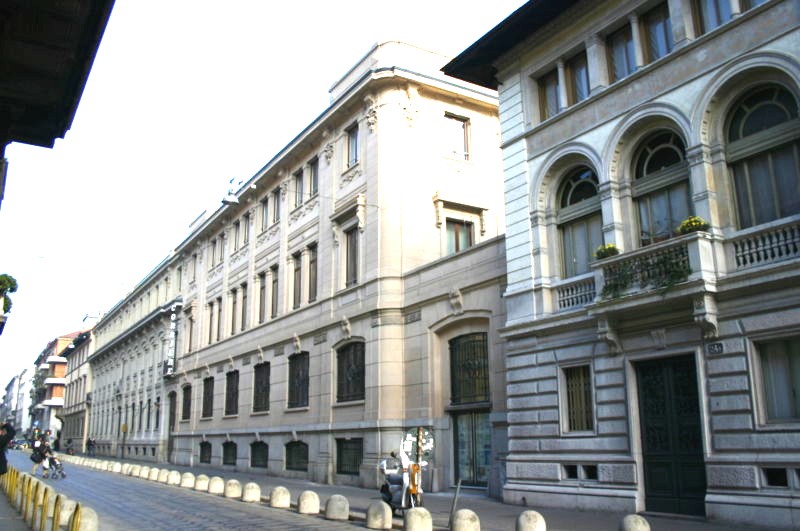
[Above: The Corriere Della Sera building in Milan]
The Corriere Della Sera is the Italian equivalent of the New York Times and the London Times.
It wields huge influence throughout Italy and reflects the popular mood in its reporting. It does NOT like the campaign of vilification against the trial and its outcome. Here is a translation of today’s blast by Beppe Severgnini.
The do-it-yourself verdicts and that wrongful U.S.A. cheering
Many Americans criticize the ruling, but have never followed the case. Why do they do that?
Judicial nationalism and media justice, when put together, form a deadly cocktail. We also have Reader-patriots and journalist-judges ourselves, but what is happening in the United States after the conviction of Amanda Knox, is embarrassing. Therefore it is highly worth pondered upon.
American television, newspapers and websites are convinced that Amanda is innocent. Why? No one knows. Did they follow all of the trial? Did they evaluate the evidence? Did they hear the witnesses who, moreover, testified in Italian? Of course not! They just decided so: and that’s enough.
Like Lombroso’s*** proselytes: a girl that is so pretty, and what’s more, American, cannot possibly be guilty. No wonder Hillary Clinton is now interested in the case: she’s a politician, and cannot ignore the national mood.
There are, as I wrote at the beginning, two aspects of the issue. One is judicial nationalism, which is triggered when “a passport is more significant than an alibi” as noted in yesterday’s Corriere’s editorial by Guido Olimpio. The United States tend to always defend its citizens (Cermis tragedy, the killing of Calipari) and shows distrust of any foreign jurisdiction (hence the failure to ratify the International Criminal Court). In the case of Italy, at play are also the long almost biblical timespans of our justice, for which we’ve been repeatedly criticized at the European level.
But there is a second aspect, just as serious as the first: the media justice operation. Or better: a passion for the do-it-yourself trial. It’s not just in the United States that it happens, but these days it is precisely there that we must look, if we want to understand its methods and its consequences.
Timothy Egan - a New York Times columnist, based in Seattle, therefore from the same city of Amanda - writes that the ruling “has little to do with the evidence and a lot with the ancient Italian custom of saving face.” And then: “The verdict should have nothing to do with medieval superstitions, projections sexual fantasies, satanic fantasies or the honor of prosecuting magistrates. If you only apply the standard of law, the verdict would be obvious “.
But obvious to whom? Egan ““ I’ll give it to him - knows the case. But he seems determined, like many fellow citizens, to find supporting evidence for a ruling that, in his head, has already been issued: Amanda is innocent. In June - the process was half-way - he had already written “An innocent abroad” (a title borrowed from Mark Twain, who perhaps would not have approved this use).
To be sure, among the 460 reader comments, many are full of reasonable doubt and dislike journalists who start from the conclusion and then try in every way to prove it.
I did not know if Amanda Knox was guilty. In fact, I did not know until Saturday, December 5, when a jury convicted her. I do have the habit of respecting court judgments, and then it does not take a law degree ““ which I happen to have, unlike Mr. Egan - to know how a Court of Assizes works.
It is inconceivable that the jurors in Perugia have decided to condemn a girl if they had any reasonable doubt. We accept the verdict, the American media does not. But turning a sentence into an opportunity to unleash dramatic nationalistic cheering and prejudice is not a good service to the cause of truth or to the understanding between peoples.
A public lynching, a witch hunt trial? I repeat: what do our American friends know? How much information do those who condemn Italy on the internet possess? How much have those who wrote to our Embassy in Washington, who accused the magistrates in Perugia, and who are ready to swear on Amanda’s innocence, studied this case for past two years?
Have they studied the evidence, assessed the experts’ testimony, or heard the witnesses of a trial that was much (too) long? No, I suppose. Why judge the judges, then?
They resent preventive detention? We don’t like it either, especially when prolonged (Amanda and Raffaele have spent two years in prison before the sentence). But it is part of our system: in special cases, the defendant must await trial while in jail.
What should we say, then, about the death penalty in America? We do not agree with it, but we accept that in the U.S. it is the law, supported by the majority of citizens. A criminal, no matter which passport he has in his pocket, if he commits a murder in Texas, knows what he risks.
Before closing, a final, obligatory point: I also did not like the anti-Amanda crusade in the British media, for the same reasons. The nationality of Meredith, the victim, does not justify such an attitude.
For once - can I say it? - We Italians have behaved the best. We waited for and now we respect the ruling, pending further appeal.
I wish we Italians behaved like that with all other high profile crimes in our country - from Garlasco’s case and on - instead of staging trials on television and spewing verdicts from our couch.
***Note: Cesare Lombroso, was a 19th century Italian criminologist who postulated that criminality was inherited, and that someone “born criminal”’ could be identified by physical defects.
[Below: the distinguished Italian columnist Beppe Severgnini of Corriere]
